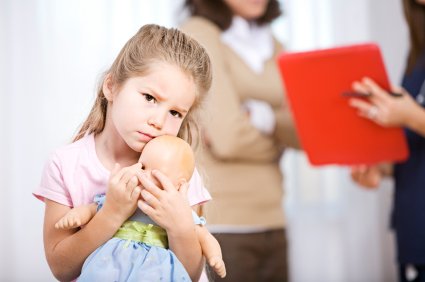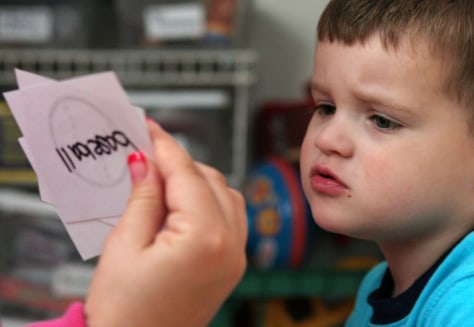Children With Autism Have Elevated Levels of Steroid Hormones in the Womb
Researchers have discovered that children who later develop autism are exposed to elevated levels of steroid hormones (ie, testosterone, progesterone, and cortisol) in the womb.
The finding, published in the journal Molecular Psychiatry, may help explain why autism is more common in males than females, but should not be used to screen for the condition.
Simon Baron-Cohen, MD, and Michael Lombardo, MD, University of Cambridge, Cambridge, United Kingdom, and Bent Nørgaard-Pedersen, MD, Statens Serum Institute, Copenhagen, Denmark, and colleagues utilised approximately 19,500 amniotic fluid samples stored in a Danish biobank from individuals born between 1993 and 1999.
The fluid was collected when women chose to have an amniocentesis around 15 to 16 weeks of pregnancy. This coincides with a critical period for early brain development and sexual differentiation, and thus allows scientists access into this important window in fetal development.
The researchers identified amniotic fluid samples from 128 males later diagnosed with an autism spectrum condition and matched these up with information from a central register of all psychiatric diagnoses in Denmark.
Within the amniotic fluid the researchers looked at 4 key ‘sex steroid’ hormones that are each synthesised, step-by-step from the preceding one, in the ‘4 sex steroid’ pathway: progesterone, 17 alfa-hydroxy-progesterone, androstenedione, and testosterone. They also tested the steroid hormone cortisol that lies outside this pathway.
Autism is usually identified by the time a child is 30 months old. It is often discovered when parents become concerned that their child may be deaf, is not yet talking, resists cuddling, and avoids interaction with others.
Some of the early signs and symptoms which suggest a young child may need further evaluation for autism include:
no smiling by six months of age
no back and forth sharing of sounds, smiles or facial expressions by nine months
no babbling, pointing, reaching or waving by 12 months
no single words by 16 months
no two word phrases by 24 months
regression in development
any loss of speech, babbling or social skills
A preschool age child with “classic” autism is generally withdrawn, aloof, and fails to respond to other people. Many of these children will not even make eye contact. They may also engage in odd or ritualistic behaviors like rocking, hand flapping, or an obsessive need to maintain order.
Many children with autism do not speak at all. Those who do may speak in rhyme, have echolalia (repeating a person’s words like an echo), refer to themselves as a “he” or “she,” or use peculiar language.
 The researchers found that levels of all steroid hormones were highly associated with each other and most importantly, that the autism group on average had higher levels of all steroid hormones, compared to a typically developing male comparison group.
The researchers found that levels of all steroid hormones were highly associated with each other and most importantly, that the autism group on average had higher levels of all steroid hormones, compared to a typically developing male comparison group.
“This is one of the earliest non-genetic biomarkers that has been identified in children who go on to develop autism,” said Dr. Baron-Cohen. “We previously knew that elevated prenatal testosterone is associated with slower social and language development, better attention to detail, and more autistic traits. Now, for the first time, we have also shown that these steroid hormones are elevated in children clinically diagnosed with autism. Because some of these hormones are produced in much higher quantities in males than in females, this may help us explain why autism is more common in males.”
“These new results are particularly striking because they are found across all the subgroups on the autism spectrum, for the first time uniting those with Asperger Syndrome, classic autism, or Pervasive Developmental Disorder Not-Otherwise-Specified,” he added. “We now want to test if the same finding is found in females with autism.”
“This result potentially has very important implications about the early biological mechanisms that alter brain development in autism and also pinpoints an important window in fetal development when such mechanisms exert their effects,” added Dr. Lombardo. “Our discovery here meshes nicely with other recent findings that highlight the prenatal period around 15 weeks gestation as a key period when important genetic risk mechanisms for autism are working together to be expressed in the developing brain.”
Facts about Autism
Did you know ...
Autism now affects 1 in 68 children and 1 in 42 boys
Autism prevalence figures are growing
Autism is the fastest-growing serious developmental disability in the U.S.
Autism costs a family $60,000 a year on average
Boys are nearly five times more likely than girls to have autism
There is no medical detection or cure for autism
National Institutes of Health Funds Allocation
Total 2012 NIH budget: $30.86 billion
Of this, only $169 million goes directly to autism research. This represents 0.55% of total NIH funding.
 Dr. Baron-Cohen cautioned that the study results “should not be taken as a reason to jump to steroid hormone blockers as a treatment as this could have unwanted side effects and may have little to no effect in changing the potentially permanent effects that fetal steroid hormones exert during the early foundational stages of brain development.”
Dr. Baron-Cohen cautioned that the study results “should not be taken as a reason to jump to steroid hormone blockers as a treatment as this could have unwanted side effects and may have little to no effect in changing the potentially permanent effects that fetal steroid hormones exert during the early foundational stages of brain development.”
“Nor should these results be taken as a promising prenatal screening test,” he added. “There is considerable overlap between the groups and our findings showed differences found at an average group level, rather than at the level of accurately predicting diagnosis for individuals. The value of the new results lies in identifying key biological mechanisms during fetal development that could play important roles in atypical brain development in autism.”
###
SOURCE: University of Cambridge